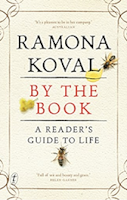Choosing the books to take on holiday is where having a really tall to-be-read pile comes into its own. I would never take library books away with me, particularly when I'm planning to read beside a pool -- anything could happen!
So I picked six books from my stack and stowed them in my suitcase -- believe me, they took up way more room than the clothes I brought with me. I chose mostly secondhand volumes so I could take risks with them, and indeed, I left a couple of them behind in the house bookcase for others to enjoy.
The first book to be finished (almost finished on the flight to Cairns, in fact) was Monica Edwards' The White Riders. This was a fun, horsey adventure where Tamzin and her friends pretend to be ghosts, or demons, or something scary anyway, to frighten away developers who are building a holiday camp on the marshes. As a child I adored the second volume of Edwards' Romney Marsh series, which features only Tamzin and Rissa, and I remember my indignation when I came across a later book which included BOYS. However, I've now grown used to Meryon (hot, dashing, descendant of a pirate, clearly going to be Tamzin's romantic interest when they get a bit older) and Roger (Rissa's cousin, nice enough, but just making up the numbers). I enjoyed The White Riders but I don't think the idea of dashing around dressed in white sheets has aged particularly well...
Next up was Ramona Koval's
By the Book, part memoir of her own childhood and adult reading, and part rumination on books and reading in general. As someone who for many years hosted the ABC's Book Show, she had lots to share about the joys of reading and some fascinating stories to tell, such as the history of the Sarajevo Haggadah (which I think is the basis of Geraldine Brooks' novel,
The People of the Book? Haven't read that one). This was a perfect holiday read, interesting but light.
Next I finished Mary Stewart's Touch Not the Cat, passed onto me from a street library by my friend Sian. This novel rang bells with me, the cover proclaimed it as a Number 1 International Bestseller. I thought I might have read it as a child when my mother borrowed it from the Mt Hagen library, but the publication date of 1976 makes that unlikely. Now I think I might have read part of a serialised version in the Women's Weekly or New Idea. I definitely remember being intrigued by the title. Anyway, Touch Not the Cat is quite the melodramatic tale, involving telepathic lovers, a maze, a neglected mansion, coded messages in antique poetry, and a pair of sinister twins. Also perfect holiday reading! (This is exactly what my copy looked like, too, by the way...)

Another old favourite author was next, also rescued from a street library: Mary Wesley's A Dubious Legacy. However, this was not my favourite Wesley title. There was the usual knotted plot, psychological surprises, eccentricities and refreshing sexual frankness, and even the reappearance of some characters from previous stories, but A Dubious Legacy was irreparably marred for me by an instance of animal cruelty played for laughs, and also a factual inaccuracy -- she has children watching Dr Who in the summer of 1990, when any serious follower of the Doctor knows that the show went on extended hiatus from 1989 till 1996. Sloppy research, Mary!
Last, but definitely not least, was
White Night by Ellie Marney. A rare stand alone novel,
White Night is set in the country town milieu that Marney knows well, and -- I was going to write, there's no violent crime in this book, but that's not exactly true! However,
White Night is at its heart a story about love, the ties between people, and friendship. It's narrated by Bo, a sixteen year old boy becoming a man, who falls for Rory, the 'feral' girl from the mysterious community on the town's fringes. I loved the way that Marney lets us, the readers, fall in love with the Eden community just as Bo does, before its flaws become obvious to us all. Thoroughly recommended (as usual).




























